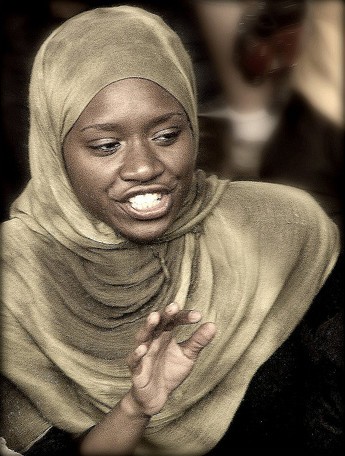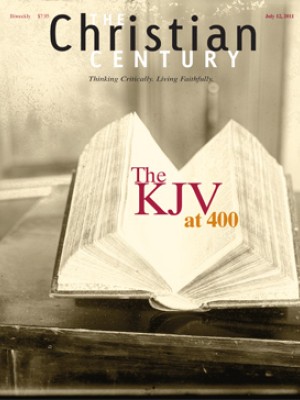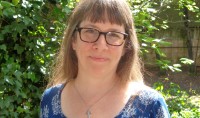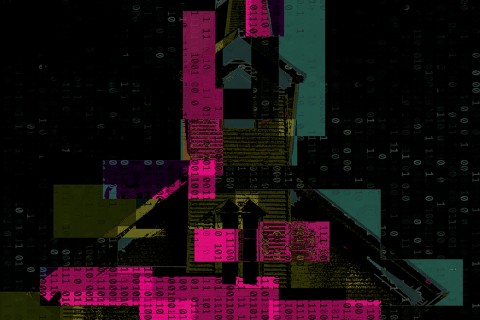Veiled voices
On a summer evening late in the 1990s, Harvard Divinity School professor Leila Ahmed was walking with a friend—a feminist scholar visiting from a Muslim-majority country—when they came across a large gathering on the Cambridge Common. As they stood to watch, they began to notice that all the women were in hijab, the head covering worn by some Muslim women. Ahmed's friend turned to her in dismay, saying, "To them, we are the enemy. That's how they see us, all of us, people like us, feminists, progressives."
Ahmed shared her friend's discomfort. The only veiled women Ahmed remembers seeing during her childhood and youth in Cairo in the 1940s and '50s were women associated with the Muslim Brotherhood. The sight of Muslim women with their heads covered stirred childhood memories of the bombing of cinemas and the assassination of Egypt's prime minister, Mahmoud al-Nuqrashi Pasha, a friend of her father's. The hijab seemed to her a symbol of the gender hierarchy and gender separation advocated by Islamists in her home country.
Read our latest issue or browse back issues.
How to explain, then, the sight of more and more women wearing the hijab in the United States? Ahmed began researching the return of the veil in the Middle East and its growing presence in the West. The result is A Quiet Revolution: The Veil's Resurgence, from the Middle East to America (Yale University Press), a book fascinating both for the story it tells and for its story of a scholar who has her own assumptions upended through her research. Her deliberate seeking out of a variety of "angles of observation" on the veil results in what she describes as "a complete reversal of my initial expectations."
The discomfort Ahmed and her friend felt on that summer night in the late 1990s mirrors the discomfort many Egyptians felt when the hijab began to appear on university campuses in the '70s. These young women disturbed their elders just as American students of the '60s disturbed theirs, and for many of the same reasons: through their unusual manner of dress they seemed to be doing more than just challenging and critiquing the status quo. Inspired by the activism of resurgent Islamism, many of the students who put on the hijab reported feeling powerful in it. Some of these young women were studying for professions like medicine and engineering; they felt empowered to enter public spaces and join the public discourse about creating a society based on Islamic values.
Ahmed is not romantic about this. She acknowledges that some women felt pressure to dress differently, and she notes that some women report that members of the Muslim Brotherhood paid women to wear the veil. She sees that by the '80s a movement that began among women was being co-opted by men who had their own political and religious agenda. These findings did not surprise her. What did surprise her were the ways in which women extended the meaning of Islamic dress far beyond what many Islamists intended, using the veil as a way of cultivating identities as socially active Muslims and transcending traditional limits to their freedom.
Ahmed follows the veil as it accompanied Muslim immigrants to North America after immigration quotas were abolished in 1965 and its presence in American society increased, especially after the attacks of 9/11. Some Muslim women unveiled after 9/11 as violence against Muslims flared, but others began wearing the hijab. Some women chose to wear it in solidarity with Muslims throughout the world, or to publicly claim their Muslim identity, or to be recognizable to other Muslims. Some wore it as a way of challenging stereotypes and inviting conversation about Islam. Some turned their attention more closely to Islam and experienced a spiritual awakening that the hijab helped them to express. Other women articulated reasons for veiling that had little to do with 9/11. Amina Wadud, an African-American scholar of Islam who leads Friday prayers in New York City, explained that she covered her body as a way of claiming her "historical identity, personal dignity, and sexual integrity" as a descendant of slave women whose bodies had been bought and sold.
For many women the veil that Ahmed and her friend regarded as a symbol of patriarchy and oppression has become a symbol of their striving for gender and racial justice. It is "they and not us, the secular or privately religious Muslims," writes Ahmed, who have integrated Islam with American traditions of social and political activism. They opened new "possibilities of belief, practice and interpretation for the rising generation."
The image of the veiled Muslim woman has been invoked to justify colonialism and war from the colonial period to our own day—reason enough to read this book. By allowing veiled women to speak for themselves, Ahmed reminds us that human beings and their religious practices are always more complex than we imagine. A Quiet Revolution illustrates the creativity that can be evoked by the life of faith, the ways religious ideas are transformed as they move across place and time, and the power of scholarship to overturn our assumptions and open us to each other in new ways.








